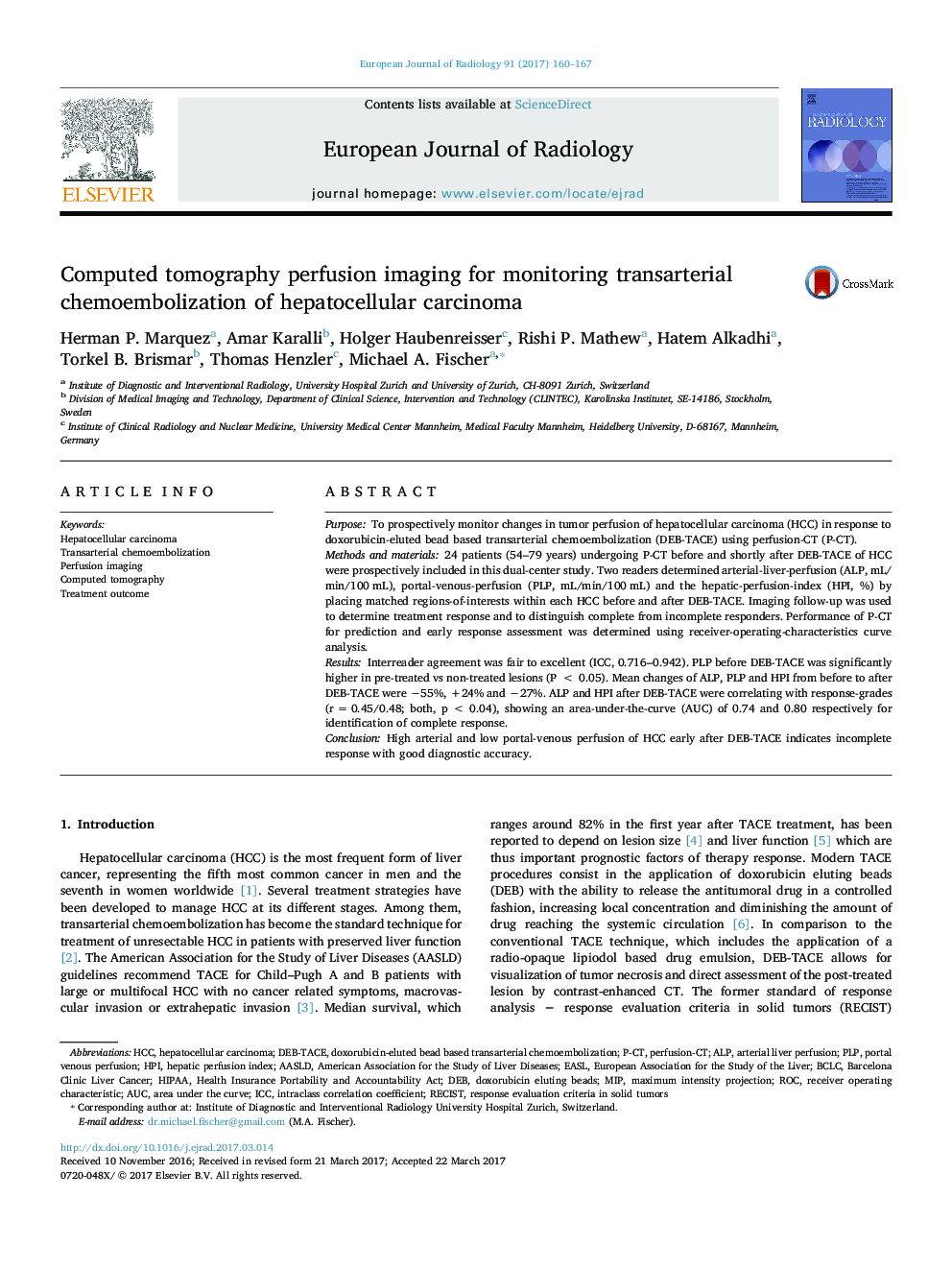| Article ID | Journal | Published Year | Pages | File Type |
|---|---|---|---|---|
| 5726301 | European Journal of Radiology | 2017 | 8 Pages |
PurposeTo prospectively monitor changes in tumor perfusion of hepatocellular carcinoma (HCC) in response to doxorubicin-eluted bead based transarterial chemoembolization (DEB-TACE) using perfusion-CT (P-CT).Methods and materials24 patients (54-79 years) undergoing P-CT before and shortly after DEB-TACE of HCC were prospectively included in this dual-center study. Two readers determined arterial-liver-perfusion (ALP, mL/min/100 mL), portal-venous-perfusion (PLP, mL/min/100 mL) and the hepatic-perfusion-index (HPI, %) by placing matched regions-of-interests within each HCC before and after DEB-TACE. Imaging follow-up was used to determine treatment response and to distinguish complete from incomplete responders. Performance of P-CT for prediction and early response assessment was determined using receiver-operating-characteristics curve analysis.ResultsInterreader agreement was fair to excellent (ICC, 0.716-0.942). PLP before DEB-TACE was significantly higher in pre-treated vs non-treated lesions (P < 0.05). Mean changes of ALP, PLP and HPI from before to after DEB-TACE were â55%, +24% and â27%. ALP and HPI after DEB-TACE were correlating with response-grades (r = 0.45/0.48; both, p < 0.04), showing an area-under-the-curve (AUC) of 0.74 and 0.80 respectively for identification of complete response.ConclusionHigh arterial and low portal-venous perfusion of HCC early after DEB-TACE indicates incomplete response with good diagnostic accuracy.
